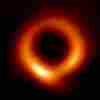
This artist’s impression reveals a hazy sub-Neptune-sized planet just lately noticed with the James Webb Area Telescope.
NASA/JPL-Caltech/R. Damage (IPAC)
cover caption
toggle caption
NASA/JPL-Caltech/R. Damage (IPAC)
This artist’s impression reveals a hazy sub-Neptune-sized planet just lately noticed with the James Webb Area Telescope.
NASA/JPL-Caltech/R. Damage (IPAC)
An enigmatic, cloud-enshrouded planet that has puzzled astronomers for years seems to be much less scorching than anticipated – and surprisingly shiny.
That is what the James Webb Area Telescope revealed when it peered at a so-called mini-Neptune that astronomers have been attempting to know ever because it was first found round one other star over a decade in the past, in line with a brand new report printed by the journal Nature.
Our personal photo voltaic system has nothing like this planet, known as GJ 1214b. It is greater than the rocky planets like Earth, however nonetheless smaller than any of our system’s ice or gasoline giants.
And but research present that such planets – typically known as super-Earths or mini-Neptunes – are extremely frequent in our galaxy.

“Is it like an enormous, scaled-up Earth? Is it a small, scaled-down Neptune? Is it one thing completely completely different that we have by no means seen earlier than, possibly one thing known as a waterworld, the place the environment could be all steamy?” wonders Eliza Kempton, an astronomer with the College of Maryland, Faculty Park.
She says astronomers have zeroed in on GJ 1214b specifically as a result of it is the single-most accessible planet like this to watch. It orbits a small but vibrant star that is comparatively close by, simply 48 light-years away.
The difficulty is, the planet has proved remarkably immune to giving up its secrets and techniques.
“This planet has been a problem. We have been attempting to know what its environment is product of for a very long time,” says Kempton.

Generally astronomers can find out about a planet by watching because it passes in entrance of its star and analyzing the starlight that filters by way of its environment, she explains. However that technique did not work for this one, as a result of the planet is totally lined in a thick shroud of clouds or haze.
The recently-launched James Webb Area Telescope, nonetheless, let astronomers have a look at this planet in a brand new approach. This telescope detects infrared gentle, which might be regarded as mainly warmth.
“What we tried to do was to watch the warmth coming off the planet, and we have been very profitable in doing that,” says Kempton.
The telescope watched because the planet orbited its star, which happens as soon as each 38 hours. “We have been capable of successfully map out the temperature of the planet on all of its completely different phases,” says Kempton.
The temperature on the dayside of the planet is about 530 levels Fahrenheit–way too scorching for any recognized life, however nonetheless far colder than the researchers anticipated.
Meaning as a substitute of absorbing the entire vitality coming from its star, this planet should be extremely reflective and capable of scatter again about half of the incoming vitality.
“We did not anticipate the planet to be so reflective, and we truly sort of anticipated the alternative,” says Kempton.
Scientists had beforehand thought the clouds may be product of some sort of darkish, sooty haze, she says, however that does not match with all the sunshine being mirrored.
“That tells us one thing about what these clouds or hazes within the environment are product of, and that is actually the brand new massive query now,” she says, including that scientists will doubtless begin attempting to create chemical hazes within the lab which have comparable properties, to see what may be taking place.
The telescope additionally noticed indicators that the planet’s environment is just not hydrogen-rich, suggesting it is not only a scaled-down Neptune, and there was proof of water vapor and methane.
“We’re fairly assured that there’s water there,” says Kempton, who notes that the planet is simply too scorching for water to exist as a liquid.
She says the James Webb Area Telescope ought to be extra planets on this dimension vary, which is able to reveal whether or not this one is an oddball or really consultant of this class of planets.
The brand new findings fascinated planet researcher Laura Kreidberg, with the Max Planck Institute for Astronomy in Germany, who wasn’t a part of this analysis group however who has used the Hubble Area Telescope to look at GJ 1214b up to now.
She known as this planet the “white whale” for scientists who research planets outdoors our photo voltaic system, simply because it has been so troublesome to characterize.
“It is nice to lastly see a few of the secrets and techniques revealed,” says Kreidberg. “I definitely did not anticipate the environment to be so shiny. That was not on my radar in any respect.”
“We will have to return to the drafting board,” she provides, “to know why the planet is as shiny as it’s.”
She says it actually appears like that is some new sort of planet altogether.
“Based mostly on what we’re seeing, it is extra like Neptune than it’s just like the Earth, but it surely’s actually its personal factor,” she says. “Neptune has an environment that is made principally out of hydrogen. It appears like GJ 1214b may need an environment that is made principally out of water.”
That pushes this planet into “a class of its personal in a approach that was by no means sure earlier than,” says Kreidberg. “And so it is actually an in-between, sort of new class of planet that we’re seeing.”
Given that they are so frequent in every single place else within the galaxy, she thinks “it is truly fairly unusual that the photo voltaic system would not have one.”








